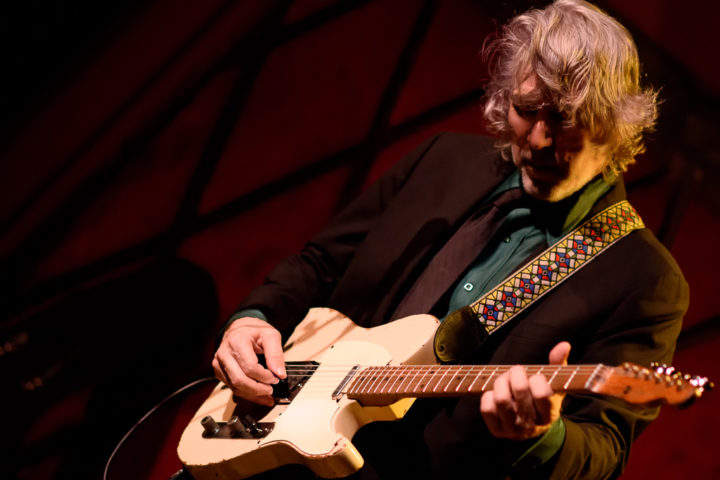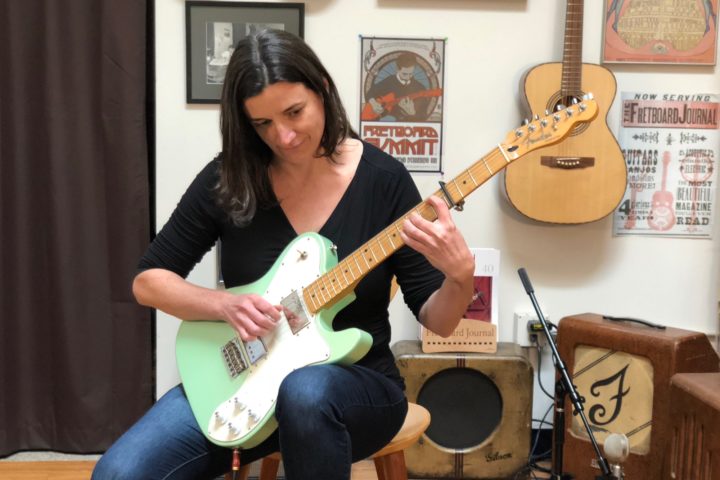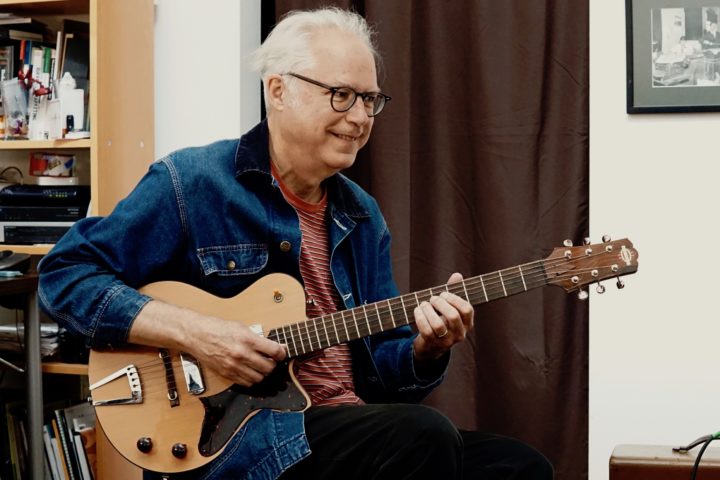A sense of curiosity helped define the Desert Rose Band as innovators in country music, a genre not primarily known as a hotbed of experimentation. They were commercially successful, too, with five No. 1 singles and citations from the Academy of Country Music as the industry’s top touring band for three consecutive years. This exposure helped establish Jorgenson’s reputation beyond Southern California while elevating him to a higher tier among his peers at home. That high-profile gig, along with his interest in a particular line of guitars, set the stage for his next move.

Jorgenson had been playing Fender Telecasters since 1974, when his search for a brighter tone than the one he’d been getting from his Gibson Les Paul SG led him to a Tele being offered for $150 in a newspaper ad. “I wasn’t that crazy about its pink paisley finish,” he says, “but I loved how radically different it was from my Gibson. Then I came across a ’53 Tele for sale, which I bought for $200 and still have. It had that same character that I liked, but its front and back pickups sounded full enough that I began thinking it could actually become my main guitar.” The more he played it around town, the more Jorgenson eased into a network of peers who shared his interest in the instrument. “I’m not saying the Tele can’t be a versatile guitar,” he explains, “but it’s like the gypsy-jazz guitar in that it’s especially well-suited to doing a few specific things. That sound draws a certain type of player. Jerry Donahue, for example, is known for bending behind the nut, and the Telecaster is scooped behind that nut perfectly for that. I knew Jerry was a great player, and another great Telecaster aficionado, Jeff Ross, introduced me to Danny Gatton’s playing. I was already a big fan of Albert Lee because I’d seen him play with Emmylou Harris. I saw Will Ray one night, playing with this extra slide on his fourth finger and using effects in really unusual ways. By then I was getting interested in this brotherhood of the Telecaster.”
After hanging out and sitting in at each other’s gigs, Jorgenson, Donahue and Ray decided in 1991 to work up a set of instrumentals to play at the Palomino. Jorgenson came up with the name Hellecasters, which seemed right on the money — as far as both gear and attitude. He also suggested that they avoid the self-indulgences that people might expect and instead concentrate on taking a more musical approach to playing actual songs. It was, in retrospect, a perfect combination of talent, focus and presentation, which is why they decided to run with the project for a while, just to see what happens. “The only instrumental electric-guitar music back then, outside of the jazz world, came from these shredding guitar players,” Jorgenson explains. “But we stuck with the melodic stuff, concentrated on getting good tones and playing as an ensemble, and kept a sense of humor about it. People were like, ‘Wow, these guys can shred, but it’s not just posing. It’s not the same distorted sound we’ve heard a million times.’ ”
Their first album, The Return of the Hellecasters, achieved a unique distinction by winning both Album of the Year and Country Album of the Year honors in Guitar Player magazine’s reader poll. They cut two more CDs, more or less in the spare time each could scrounge between other projects. The band’s success prompted Fender to issue a line of Hellecaster guitars, based more on the Strat than the Tele and built at the company’s limited-edition shop in Japan. “It’s funny,” Jorgenson muses. “I played at Carnegie Hall with the Desert Rose Band. I played all over the world with Elton John. But with everything I’ve done, the Hellecasters still seem to be the thing that most people associate with me. I guess we struck a nerve.”


